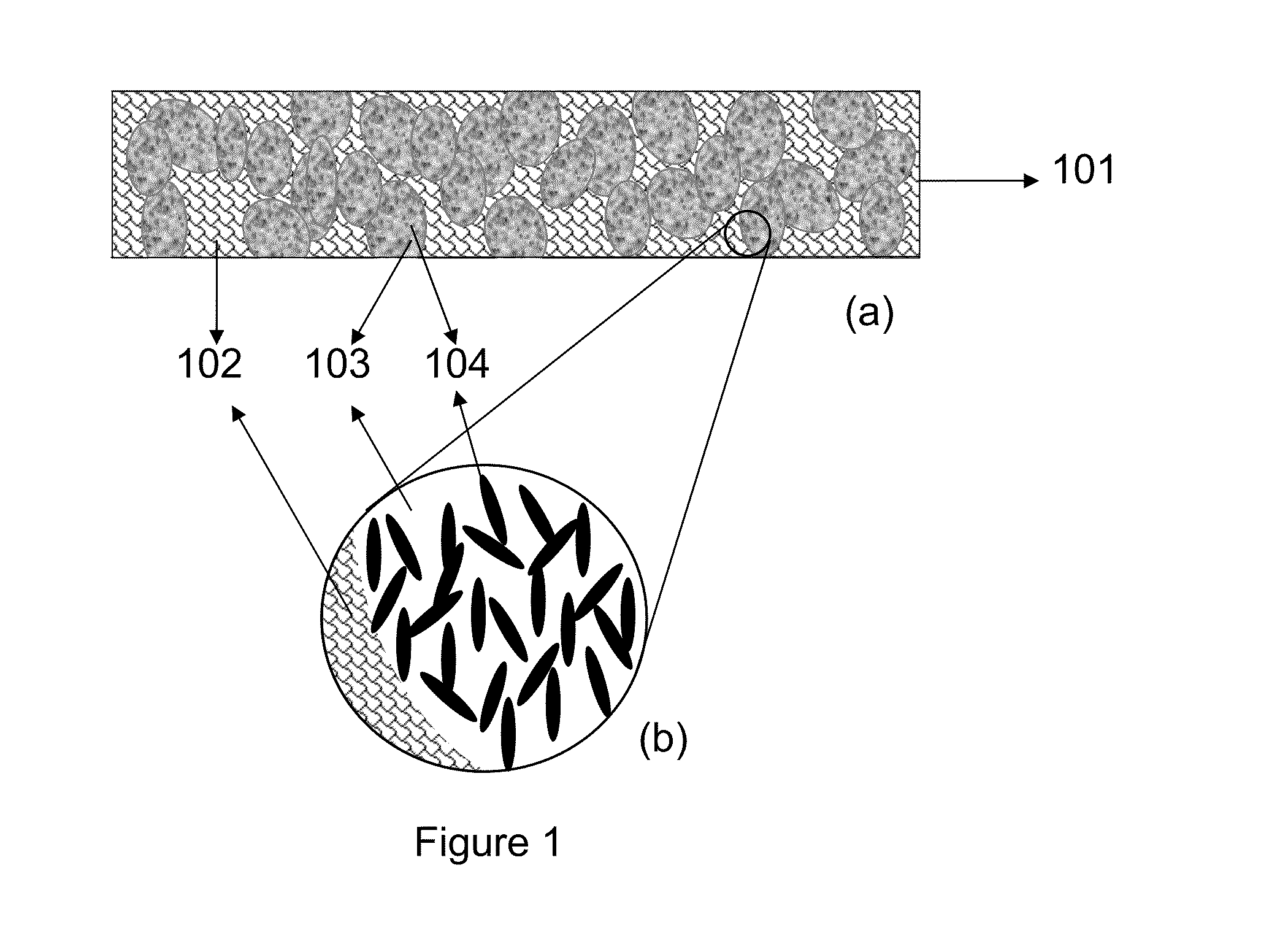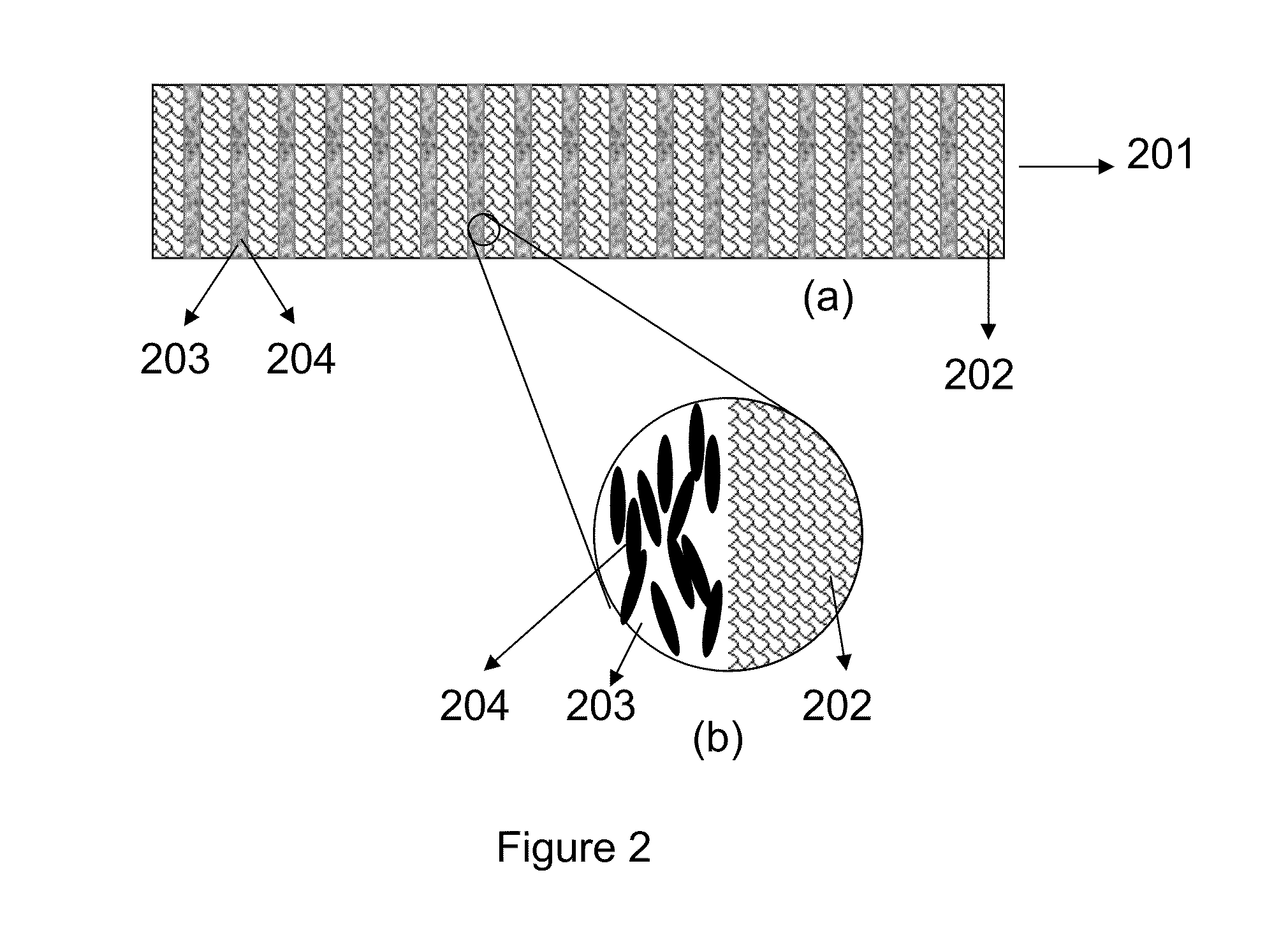Highly conductive composites
a composite material and high electrical conductivity technology, applied in the direction of non-metal conductors, conductors, manufacturing tools, etc., can solve the problems of increasing the power to drive the more resistive circuit, significantly reducing the bonding strength of the composite material, and high electrical conductivity often requires high filler loading, so as to achieve a significantly reduced percolation threshold and low percolation threshold
- Summary
- Abstract
- Description
- Claims
- Application Information
AI Technical Summary
Benefits of technology
Problems solved by technology
Method used
Image
Examples
Embodiment Construction
[0045]One exemplary non-limiting illustrative embodiment provides a two phase polymer material with at least one type, shape or phase of filler in at least one polymer phase. One phase of polymer is the matrix material (Component A) and the other phase of the polymer is a low melting material (Component B) or low softening temperature material. The matrix material can be either a thermosetting polymer, or a thermoplastic polymer, or a rubbery material which provides the required mechanical properties and necessary binding properties of the composites. The segregated second phase material could be, but not limited to, a polymeric material with relatively low melting point depending on the desired working temperature (melting point lower than the working temperature). This segregated domain flows above its melting temperature to fill up any air gaps at the interface between the composite and the substrate to ensure the maximum contact area. The filler (Compone...
PUM
| Property | Measurement | Unit |
|---|---|---|
| temperature | aaaaa | aaaaa |
| domain size | aaaaa | aaaaa |
| thermal conductivities | aaaaa | aaaaa |
Abstract
Description
Claims
Application Information
 Login to View More
Login to View More - R&D
- Intellectual Property
- Life Sciences
- Materials
- Tech Scout
- Unparalleled Data Quality
- Higher Quality Content
- 60% Fewer Hallucinations
Browse by: Latest US Patents, China's latest patents, Technical Efficacy Thesaurus, Application Domain, Technology Topic, Popular Technical Reports.
© 2025 PatSnap. All rights reserved.Legal|Privacy policy|Modern Slavery Act Transparency Statement|Sitemap|About US| Contact US: help@patsnap.com



